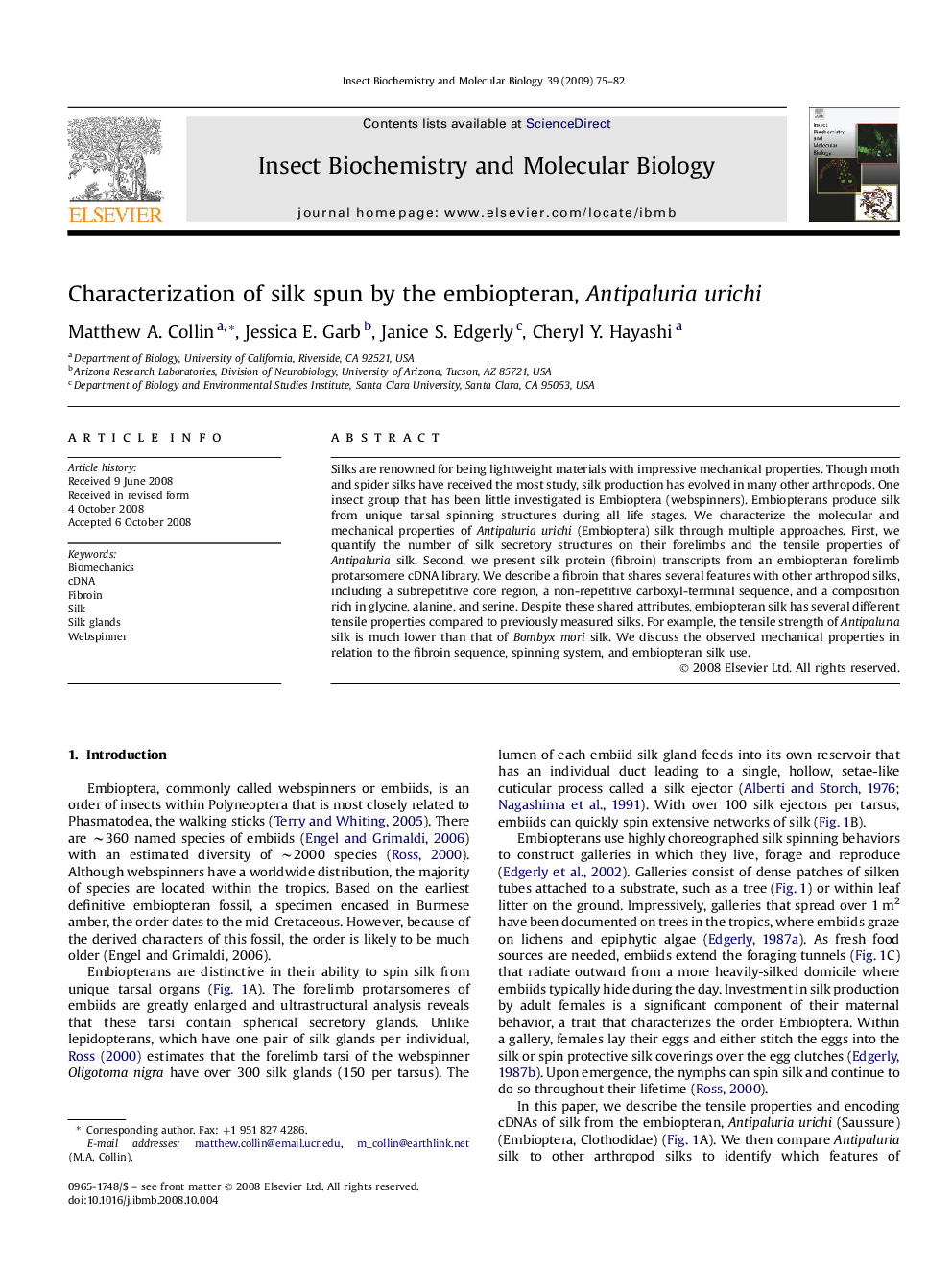| Article ID | Journal | Published Year | Pages | File Type |
|---|---|---|---|---|
| 1982695 | Insect Biochemistry and Molecular Biology | 2009 | 8 Pages |
Abstract
Silks are renowned for being lightweight materials with impressive mechanical properties. Though moth and spider silks have received the most study, silk production has evolved in many other arthropods. One insect group that has been little investigated is Embioptera (webspinners). Embiopterans produce silk from unique tarsal spinning structures during all life stages. We characterize the molecular and mechanical properties of Antipaluria urichi (Embioptera) silk through multiple approaches. First, we quantify the number of silk secretory structures on their forelimbs and the tensile properties of Antipaluria silk. Second, we present silk protein (fibroin) transcripts from an embiopteran forelimb protarsomere cDNA library. We describe a fibroin that shares several features with other arthropod silks, including a subrepetitive core region, a non-repetitive carboxyl-terminal sequence, and a composition rich in glycine, alanine, and serine. Despite these shared attributes, embiopteran silk has several different tensile properties compared to previously measured silks. For example, the tensile strength of Antipaluria silk is much lower than that of Bombyx mori silk. We discuss the observed mechanical properties in relation to the fibroin sequence, spinning system, and embiopteran silk use.
Related Topics
Life Sciences
Agricultural and Biological Sciences
Insect Science
Authors
Matthew A. Collin, Jessica E. Garb, Janice S. Edgerly, Cheryl Y. Hayashi,
